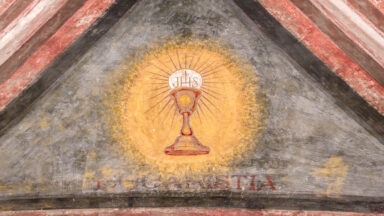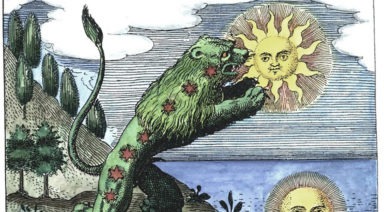Tech Start-Up Offers to Upload Clients’ Consciousness to Computer

The tech start-up accelerator, Y Combinator, is investing in a company aiming to upload consciousness into a computer simulation at some point in the future when the technology exists. The one catch? You’re guaranteed to die first.
Through a combination of cryonics and embalming the brain, a company called Nectome hopes to posthumously preserve its clients’ brain tissue, under the assumption that uploading our consciousness to a computer is an inevitable future prospect. But in order for this to happen, Nectome must euthanize its clients in the process.
The company, whose slogan reads, “Committed to the goal of archiving your mind,” has recently attracted the attention of silicon valley execs who have become enamored with the prospect of living indefinitely. In addition to receiving blood transfusions from healthy teenagers, older tech luminaries are exploring the possibility that technological advancements could one day lead to immortality. At least for those who can afford it.
Sam Altman, president of Y Combinator, said, “I assume my brain will be uploaded to the cloud.”

Altman and other investors have put down a refundable $10,000 deposit, to one day have their brains embalmed and stored, though the company hasn’t been able to prove that memory can be revived from dead brain tissue.
Nectome plans to take advantage of a recent piece of legislation passed in California, known as the End of Life Option Act, which allows for physician-assisted suicide for terminally ill patients. The company is also straightforward with its clients, calling its product “100 percent fatal.”
So why would prospective clients enthusiastically pay for something guaranteed to kill them?
“The user experience will be identical to physician-assisted suicide.” Nectome’s co-founder Robert McIntyre said, “Product-market fit is people believing that it works.”
McIntyre and cofounder Michael McCanna were recently able to acquire the corpse of a woman whose brain they were able to preserve a couple hours after she passed away. They described their process, known as aldehyde-stabilized cryopreservation, as “a fancy form of embalming that preserves, not just the outer details, but the inner details.”
The company recently won a significant federal grant for its use of a technique developed by MIT neuroscientist, Edward Boyden, that successfully preserved a pig’s brain, so every synapse could be seen through an electron microscope.
The idea of uploading consciousness, also known as the singularity, has been explored in sci-fi literature and film, including the Matrix and recent episodes of Black Mirror. The concept overlaps with the idea that our reality as we know it, may potentially be a computer simulation. Thought leaders in the tech world, including Elon Musk, said he believes there is a one in billions chance we are living in “base reality,” or a completely organic reality.
The Mystery of Torsion Fields

Russian scientist Nikolai Kozyrev was considered a prodigy. In 1925, at age 17, he published his first scientific paper, which focused on astrophysics and the atmosphere of the sun and other stars. It was met with great acclaim by other scientists.
At age 20, he graduated from the University of Leningrad with degrees in physics and mathematics. By age 28, he was a college professor and distinguished astronomer. To the science community at large, this promising young physicist disappeared for the next 11 years.
Nikolai Kozyrev: Russian Concentration Camps
While Korzyrev was enjoying a successful career as a professor and researcher, Josef Stalin, leader of the Soviet Union, was feeling threatened by scientists whom he perceived were independent thinkers. He was concerned they would see through his propaganda program. To prevent this, in 1936, he arrested them and sent them to concentration camps. Nikolai Kozyrev was among those imprisoned. There wasn’t much for him to do during the long 11 years he spent in the camps except to observe, meditate, and think.
During his imprisonment, Kozyrev was enthralled watching bacteria grow and noticed it grew in a perfect spiral. This led him to conclude that all life-forms likely draw off of an unseen spiraling source of energy. This energy is as important to maintenance and growth of life as are “eating, drinking, breathing, and photosynthesis.”
Kozyrev also concluded that this spiraling energy and growth is how time works, with the Earth orbiting in space by way of a “complex spiraling pattern.”
As the Earth rotates on its axis as it orbits the sun, it releases energy, or torsion waves, that propel it through space. The torsion waves travel at speeds faster than the speed of light. These torsion fields are actually “waves of time” which also cause ripples in gravity. Indeed, some scientists now believe that “electromagnetism, gravity and torsion waves are all members of the same family; they are just different forms of ether vibrations.”




































